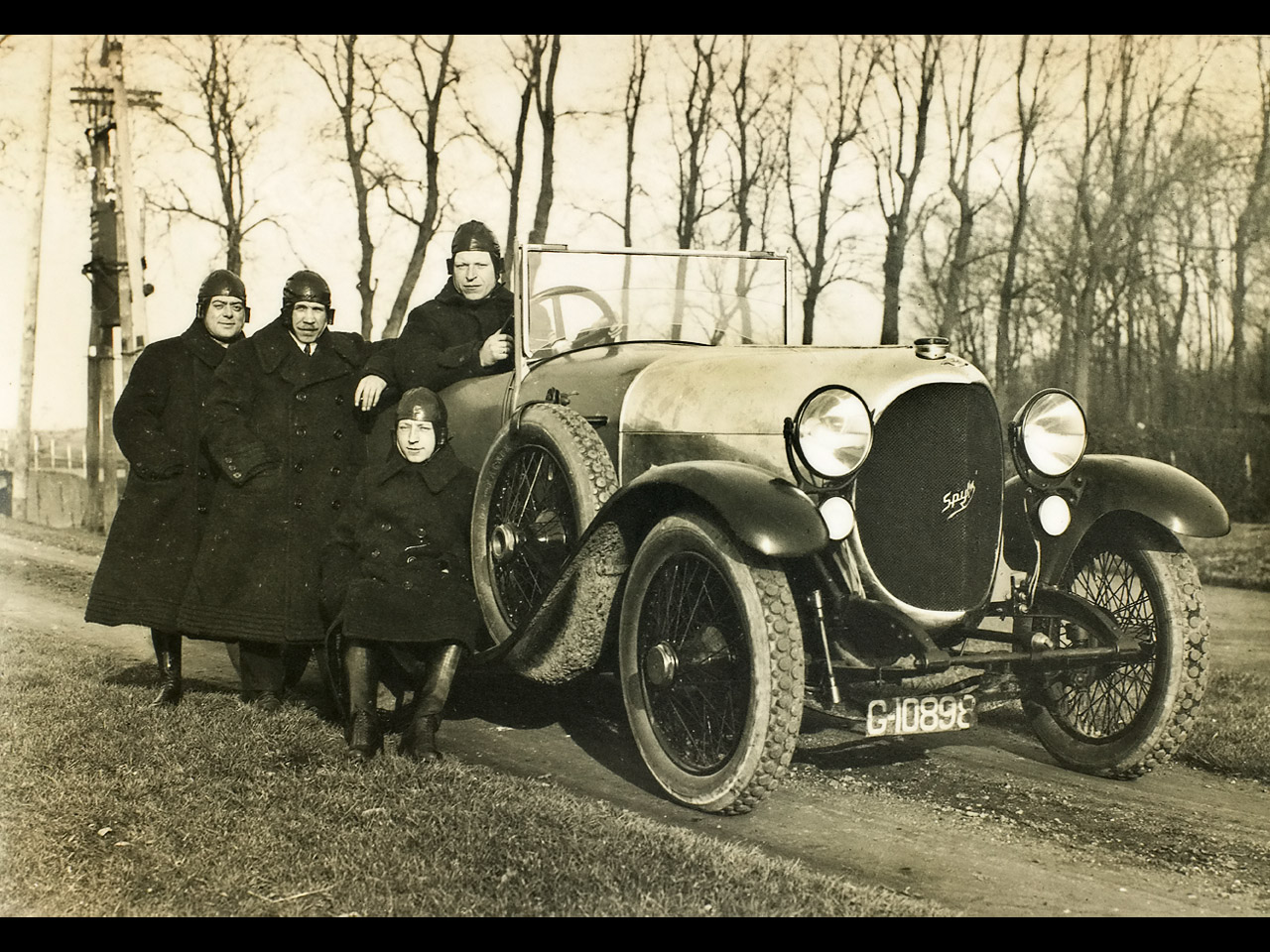Spyker C4
(from Spyker Press
Release) In 1898 two brothers, Jacobus and Hendrik-Jan Spijker,
coachbuilders in Amsterdam, built their first Benz-engined motorcar
with which they won immediate acclaim for the craftsmanship of their
bodywork. In the same year Spijker built the famous golden state
coach, still in use today, to commemorate the forthcoming coronation
of the Dutch queen, Wilhelmina. This was the turning point in their
business career: from that moment on the Spijker brothers committed
their company fully to the production ofmotorcars. The business name
was changed to Spyker, for easier recognition in foreign markets.
In 1903 Spyker introduced the extremely advanced 60/80 HP. It was
the first car with a six-cylinder engine as well as permanent
four-wheel drive andfour-wheel brakes. In the same period Spyker
introduced its patented ‘dust shield chassis,’ a chassis fitted with
a streamlined under tray that
prevented the car from making dust on unpaved roads.
Spyker’s image was
further enhanced when in 1907 a privately entered standard model
Spyker 14/18HP Tourer became legendary after successfully competing
in the famous grueling Peking to Paris raid, taking second place. It
was innovations as these that characterized the Spyker cars that
quickly became famous for their quality and the ruggedness of their
engineering. The Spyker models, with their characteristic circular
radiators were especially successful in the Dutch East Indies and in
Britain, where Spyker became known as ‘the Rolls Royce of the
continent.’
In the period preceding World War 1, a worldwide slump in the luxury
car market meant that Spyker had to diversify its production and
merged with the Dutch Aircraft Factory N.V. the company started
developing and building fighter aircraft.
During the war, Spyker built around 100 fighter aircraft and 200
aircraft engines, both of its own design. In 1915 the company
introduced the slogan still being used today: ‘Nulla tenaci invia
est via:’ ‘For the tenacious no road is impassable’. Along with the
slogan came a new logo, featuring a spoke wheel with a horizontal
propeller across.
After the war Spyker resumed car production. True to its motto,
Spyker continued building record-breaking cars. Most famous of these
is the Spyker C4. It had a special engine, built by the famous
German engineer Wilhelm Maybach. It had a double ignition system
with Bosch high-tension magneto
and battery-coil ignition with two spark plugs per cylinder.
The Spyker C4 was a powerful, dependable and luxurious car. in 1921,
a standard C4 (chassisnumber C41, engine number 3201) established a
new endurance record, driving continuously for 36 days and covering
a distance of 30,000 kilometers. This car was called the “Tenax” and
was later bought by the Dutch nobleman Hugo Baron van Pallandt who
won the first prize in the hill climb of the Mont de la Turbie near
Monte Carlo in March 1922 with it. Spyker C12 LaTurbie owes its name
to this sporting success. Also in 1922, the famous British driver
Selwyn Edge broke the Brookland’s Double-Twelve speed record,
clocking an average speed of 119 km/h.
In 1925, the Spyker Company ceased trading, but its name has never
been forgotten. Spyker became an icon, a brand name that stands for
technologically advanced, exotic and dependable cars. That heritage
has been passed over to the new Spyker company and its cars.
